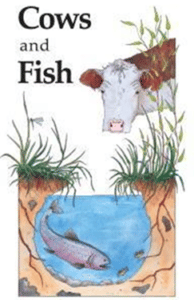Friends Not Foes
Beavers are native inhabitants of the Beaver River Watershed and have had vast social, cultural, and economic importance in this area throughout human history. Beavers are keystone species and have a large impact on the landscape. They can be found in streams, rivers, wetlands, and lakes that have access to enough woody vegetation, particularly deciduous (leafy) trees and shrubs to support their family unit. To protect from predators, they also need enough year-round water depth for underwater access to their lodge (home), food cache, trees, and shrubs. Some beavers build dams to impound water to increase depth around their lodge. Dams are built to support the transport of trees and shrubs and extend their safe swimming range. Coexistence methods such as pond levelers and culvert protectors are cost-effective and prevent unwanted damage while allowing beavers to remain in their natural environment. Pond levelers involve a pipe through a beaver dam, which mitigates flooding by establishing a maximum water level. Exclusion fences or culvert protectors are specifically designed to prevent culverts from being dammed and allow the water to continue to flow.


Beaver Benefits
Beavers slow water down by building dams, which helps
- Decrease erosion
- Safeguard against negative impacts of flood
- Cleanse water
- Slowed water allows sediments containing contaminants, nutrients, and pathogens to settle out of the water column and improve water quality.
Store and slowly release water. Beaver ponds and canals can hold large amounts of water for an extended period of time which can:
- Raise and maintain the groundwater table at higher levels to prevent the negative impacts of droughts
- Improve consistent downstream flow
- Impacts water temperature to cool it for many aquatic species
- Improve and create wetlands and riparian areas
Beavers increase ecosystem biodiversity and promote healthy forests (EMS, SLCN)
- Improving fish habitat
- Cutting down canopy trees that allow the forest understudy to grow which benefits other wildlife (EMS, SLCN)
Beavers have benefits to livestock:
- By providing alternative water sources improving water quality, increasing forage production, and safeguarding pastures from droughts
Beavers benefit indigenous communities as beaver pelts can be used in crafts domestically or in making garments (BLCN). Beaver pelts can be sold to the fur market by a licensed trapper (EMS, SLCN)
- Beaver bounties support income for members of our indigenous communities (EMS, SLCN)
Beaver Issues
Beaver activity can also result in culvert blocks, and flooding can cause a threat to nearby infrastructure (BLCN) resulting in the need for beaver management. Traditional methods for beaver management include connibar traps and underwater snares. (EMS, SLCN)





Developed in collaboration with Elizabeth Métis Settlement (EMS), Saddle Lake Cree Nation (SLCN), Beaver Lake Cree Nation (BLCN), and Cows and Fish. Funding provided by Alberta Environment and Parks (AEP).


